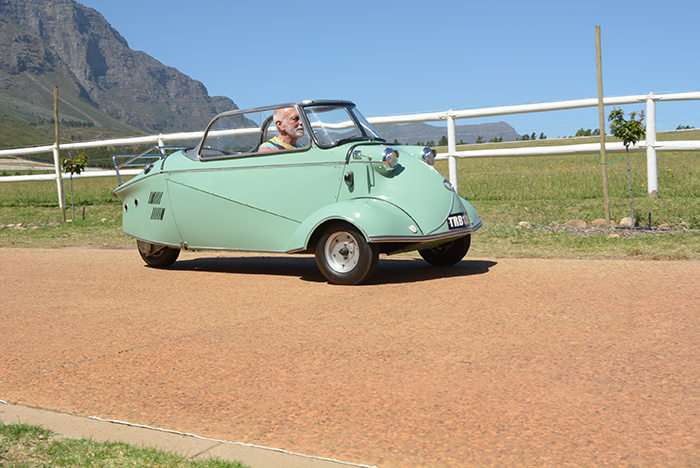
22 Nov COLLECTION IN ACTION – K
An alphabetical series of short driving impressions of some of the museum’s car collection. This month we downsize into a KR200 bubble car…
Is it a bird? Is it a plane? No, it’s a… cabin scooter! And it does not take a superman to drive it… But there is a link to the skies. The KR200 is a bubble car – the KR stands for ‘kabineroller’ – designed by aircraft engineer Fritz Fend and produced by Messerschmitt from 1955 to 1964. Post-war, the German aircraft manufacturer was temporarily not allowed to manufacture aircraft and had turned its resources to producing other commodities. In 1952, Fend approached Messerschmitt with the idea of manufacturing small motor vehicles its factory in Regensburg, and the go-ahead was given.
Based on Fend’s Flitzer invalid carriage, the design is a cross between a scooter and an aircraft fuselage and the KR175 appeared in 1953 and featured tandem seating accessed by a hatch that opened upward and to the right. The standard version had a canopy made from a large Plexiglas dome with a cut-out at the front for a small, flat glass windshield and a cut-out on either side for the frames for the sliding windows. The windscreen wiper was manually operated and the front wheelarches did not have wheel cut outs.
The KR175 was powered by an air-cooled 174 cm3 Fichtel & Sachs single-cylinder, two-stroke engine mounted in front of the rear wheel. It produced just 6,7 kW at 5 250 r/min. It was started with a pull rope but there was an option of an electric starter, which became standard in 1954. The throttle was operated by a twist-grip on the left of the handlebar steering. The chain-driven, non-synchro gearbox was a sequential, positive-stop type with four speeds but no reverse. The gear lever, on the right side of the cockpit, had a secondary lever on it which operated the clutch, but a pedal became standard in 1954. All three wheels had cable-operated brakes actuated by the single pedal. A handbrake was provided.
Around 15 000 KR175s were sold before it was replaced in 1955 with the KR200, which boasted an engine capacity increase to 191 cm3. Power was increased to7,6 kW at a giddy 6 000 r/min, which helped improve top speed to anything up to 105 km/h – depending on the weight of the passenger(s) of course! The engine had two sets of contact breaker points and, to reverse, the engine was stopped and then restarted, going backwards. This was effected by pushing the key further into the ignition switch. An offshoot of this set-up was that the KR200’s transmission then provided the same four ratios in reverse.
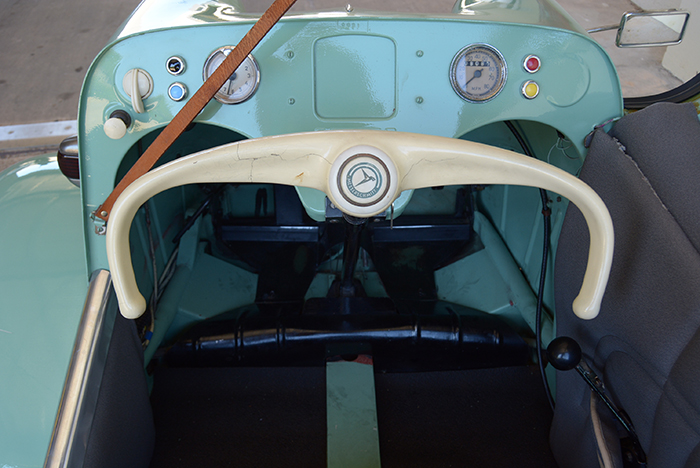
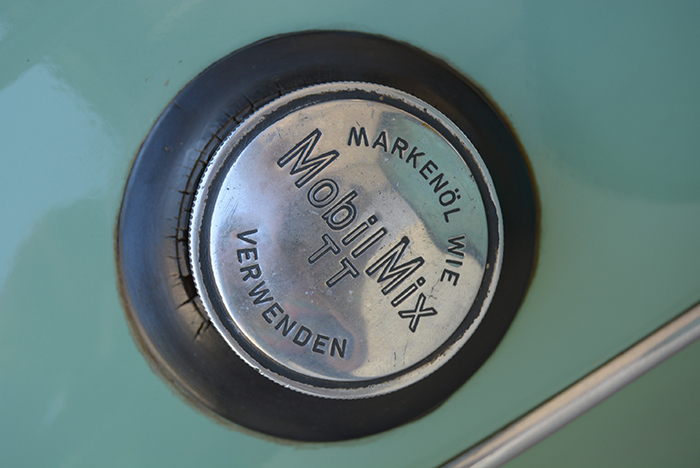
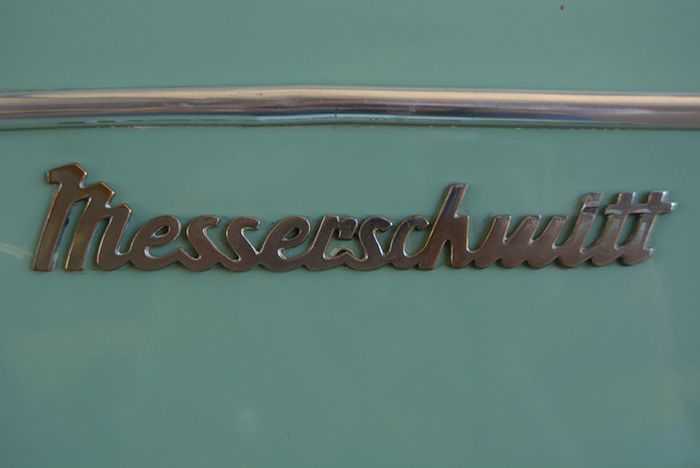
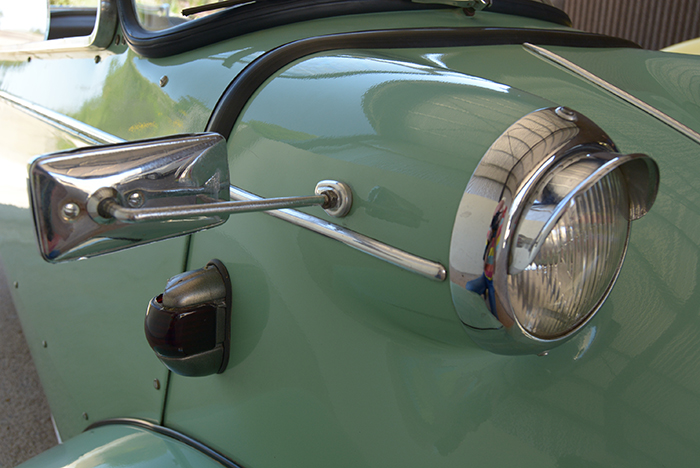
There were some styling changes that included cut-outs in the wheelarches, an improved canopy design and an electric windscreen wiper. The rear suspension and engine mounting were reworked, and hydraulic shock absorbers were installed at all three wheels.
In order to prove the KR200’s durability, in 1955 Messerschmitt prepared a KR200 to break the 24-hour speed record for three-wheeled vehicles under 250 cm3. It had a special single-seat, low-drag body and a highly modified engine, but the suspension, steering, and braking components were stock. Throttle, brake, and clutch cables were duplicated. On 29-30 August the record car was ran for 24 hours at the Hockenheimring and broke 22 international speed records in its class, including the 24-hour speed record, which it set at 103 km/h.
FMM’s KR200 is a 1957 model so is fairly civilised in terms of controls. Being 1,9 meters tall, I wondered about ever fitting into the cockpit but was amazed to find that with the front seat right back on its runners, my feet were nowhere near the pedals! But once aboard it was surprisingly comfortable, and the view outwards is 360. Once fired up and first gear located on the slightly vague linkage, it was A for Away to the accompaniment of the usual two-stroke blat from the exhaust.
The steering bar is connected directly to the track rods of the front wheels, providing an extremely direct response and I quickly discovered it required small, measured inputs in order not to weave about. Certainly it is the most direct steering I have encountered, the 4.00×8-inch tyres responding immediately. Without the opportunity of venturing into any serious traffic I cannot describe how vulnerable one might feel – if at all – but in the context of its time the KR200 certainly fulfilled a need. Certainly lots of fun.
In 1956 Messerschmitt was allowed to manufacture aircraft again and lost interest in the KR, so a company Fahrzeug-und Maschinenbau GmbH Regensburg (FMR) was set up to continue production, and other models were introduced. Production ceased in 1964 after some 40 000 had been sold as the demand for basic transport in Germany had diminished as the country’s economy boomed. But for the time, the KR200 successfully answered a need.
(Yes, alphabetically we have cheated a bit here – Messerschmitt does not begin with a K but we do not have a Kaiser or a Koenigsegg in the collection, and Kias are not classics – yet…) MM



